

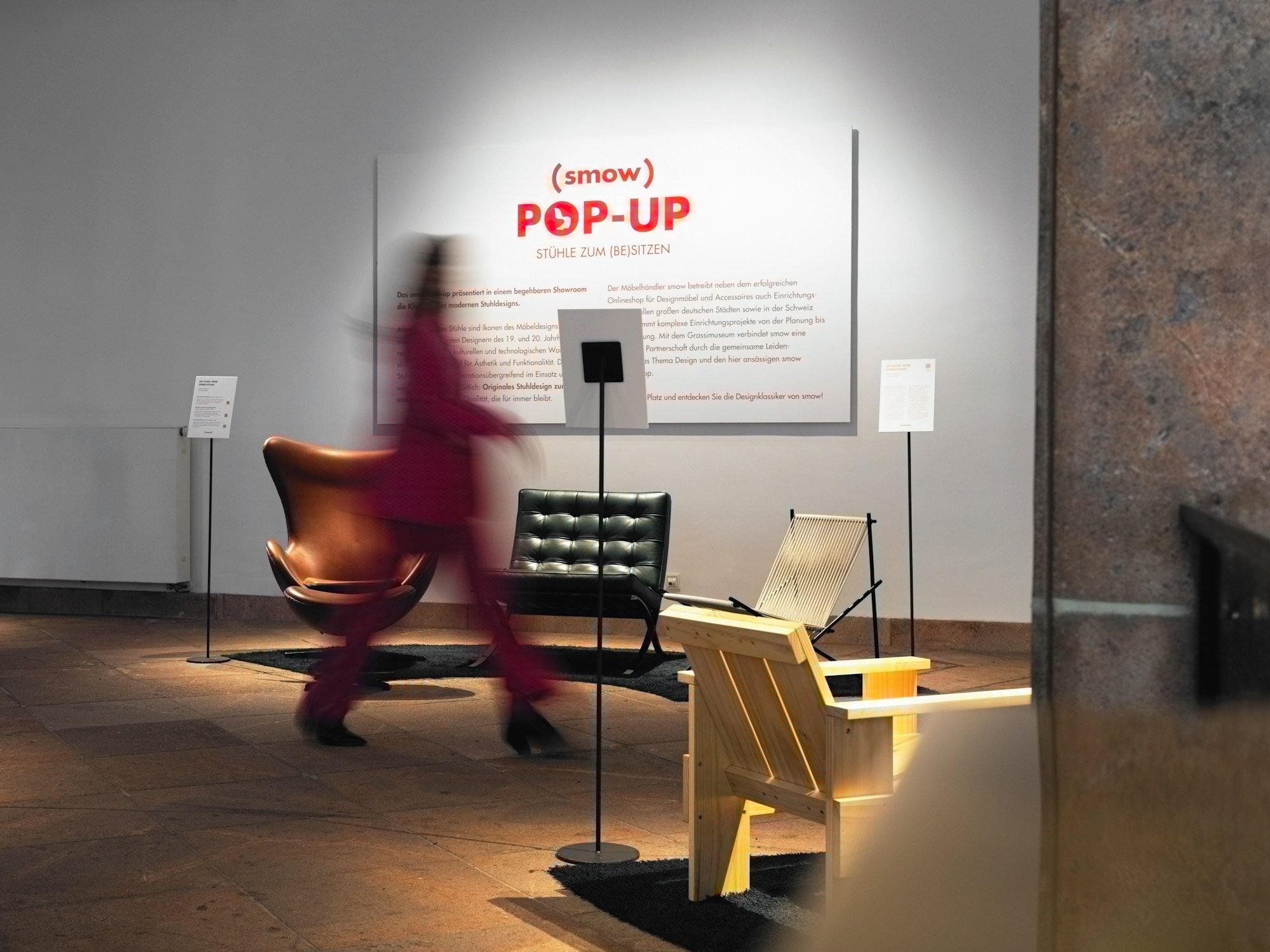
Client: GRASSI Museum of Applied Arts, Leipzig
Planning: smow
Year: 2024
Areas furnished: Exhibition in the foyer of the museum
"Classic Chairs for Sitting" – the motto of the smow pop-up at the GRASSI Museum Leipzig was taken literally: over a period of six months the museum was transformed into a space that made design classics accessible in a completely new way. The concept of the project was as innovative as it was inviting: a publicly accessible exhibition would allow museum guests not only to view design classics, but also to experience and try them out for themselves. In an inspiring ambience, visitors had the rare opportunity to sit on world-famous classic chairs.
The project was conceived against the backdrop of the long-standing, friendly relationship between the GRASSI Museum and smow and to mark the GRASSI Museum's 150th anniversary. The exhibited icons of furniture design not only offered an inspiring experience, but also built a bridge between art, culture, and design in everyday life.
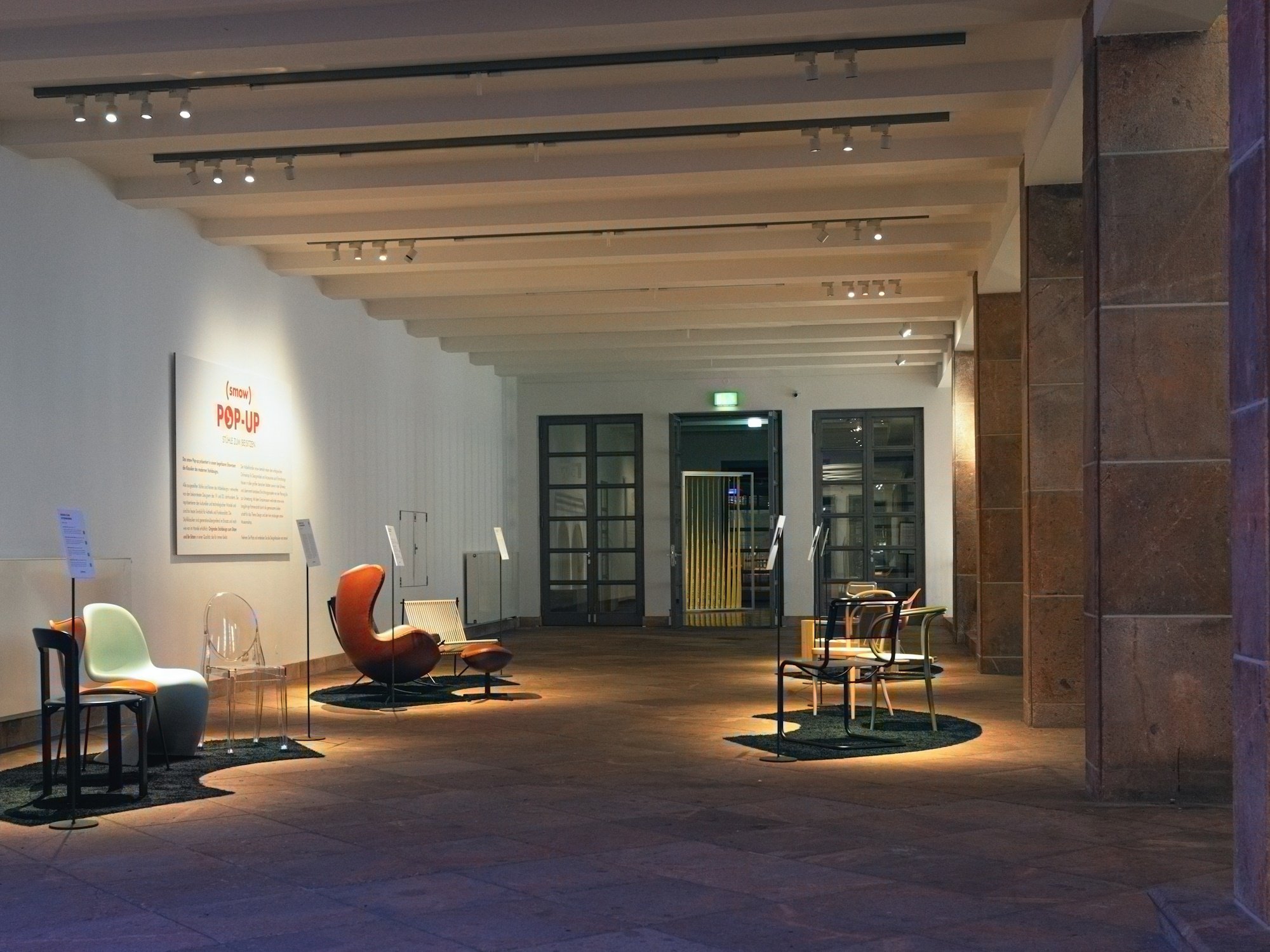
The central challenge of the smow pop-up at the GRASSI Museum was to strike a balance between cultural experience and brand presence. The goal was to capture the interest of design-savvy museum visitors without overshadowing the museum-like nature of the project. The presentation of the design classics had to be both a compelling, inspiring exhibition concept and establish a direct connection to the smow brand. At the same time, it was essential to give visitors the opportunity to view the furniture on display not just as art objects, but to actively experience it – sitting on it and trying it out – in their everyday lives.
Implementation was particularly challenging in the architecturally challenging space between two museums with different institutions. The pop-up had to blend harmoniously into the foyer, taking into account both the design and functional requirements of a public space. This included fire safety regulations, strict adherence to escape routes, and the use of non-flammable materials for the furnishings.
In addition, the budget for the pop-up was minimal, funded solely by sponsorship from smow Leipzig and smow Leipzig Managing Director Jörg Meinel. The chairs were largely on loan from designer furniture manufacturers who enthusiastically supported the project. A special sign of appreciation was Thonet's decision to donate the exhibited Thonet classics to the GRASSI Museum at the end of the exhibition.
Another challenging task was selecting the right chairs for the exhibition concept from the multitude of outstanding design classics. The careful selection of furniture transformed the exhibition into a journey through the eras of furniture design, illustrating how aesthetic and technological developments become tangible in these icons. Each of the presented chairs embodied a special story or a unique feature. The smow brackets were reflected in the presentation, particularly on the carpets, whose shape echoed the smow logo. The combination of historical significance, tangible functionality, and subtle brand presence lent the concept its special appeal.
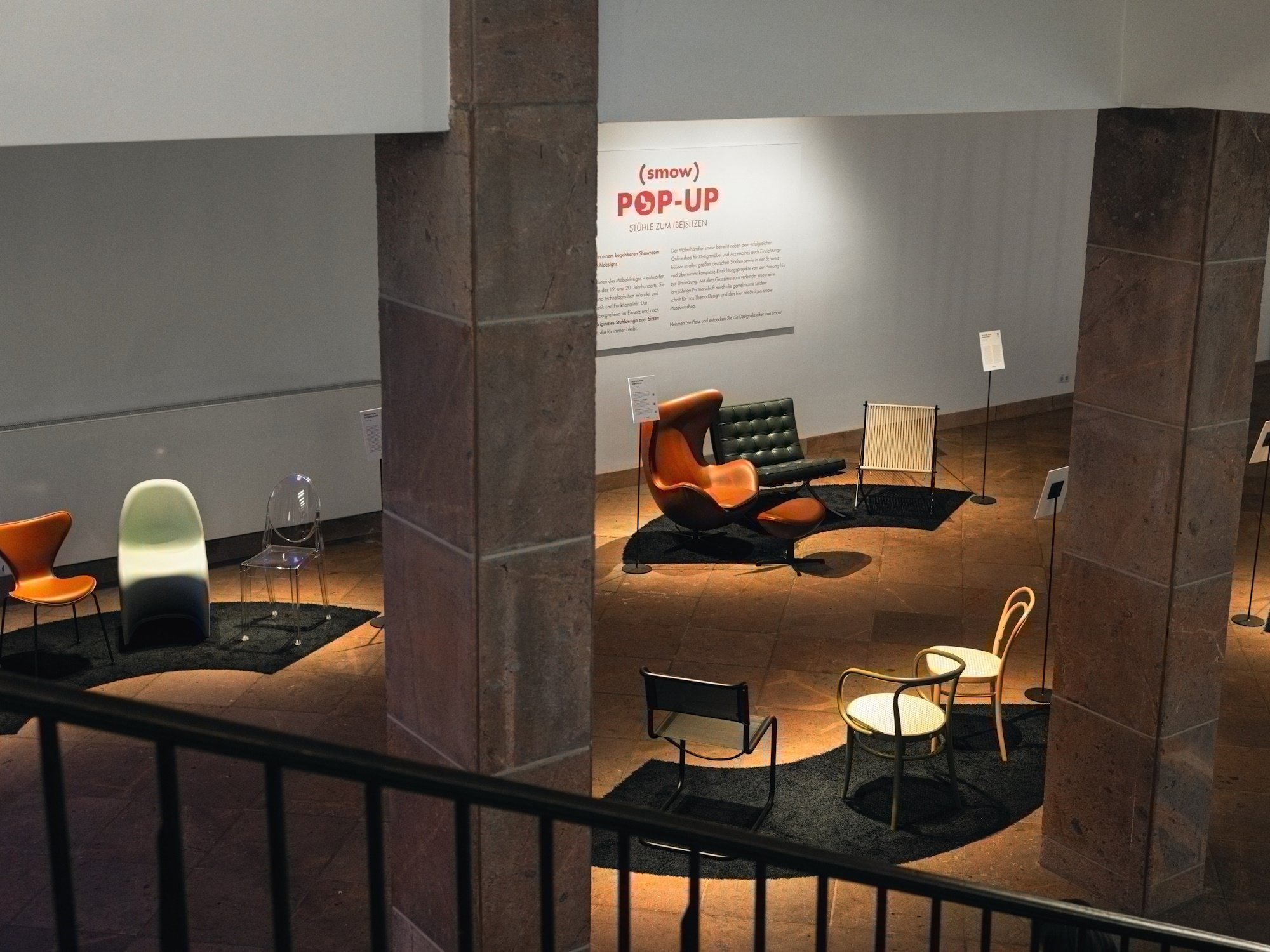
The central idea behind the smow pop-up was to not only present design history in a museum setting, but also to make it tangible for visitors. Three key elements were at the forefront: the design of the chair islands, the selection of the carpet as a unifying design element, and the displays that spanned the cultural and commercial aspects.
The Chair Islands: A Journey Through the Eras of Design
Each of the four chair islands was designed around a specific thematic focus, which in turn reflected the respective period of creation of the presented chairs. The result is a curated journey through design history, beginning with Thonet classics in their innovative bentwood elegance, particularly intelligent designer chairs featuring interesting materials or manufacturing processes, lounge chairs as the stars of any interior, combining design with the highest level of seating comfort, and finally dining chairs, the functional icons of dining areas.
The carpet: setting boundaries, creating connections
The selection of the carpet played a central role in the design concept. As a public space, the museum had specific requirements for the material – particularly with regard to non-flammability. Furthermore, the color scheme was essential to clearly separate the islands visually, while simultaneously perceiving them as a cohesive pop-up. The shape of the carpet – inspired by the smow logo brackets – not only enhanced the brand's recognition value, but also made the exhibition a distinctive smow project. The brackets were positioned to guide visitors from island to island, taking them on a curated journey through the various eras and iconic designs of the design world.
The Stands: Information meets Interaction
To give visitors a comprehensive understanding of the pieces on display, two displays were integrated into each chair island. A general display introduced the island's theme and established the connection between the presented chairs, while a second display provided detailed information on each chair, explaining its history, design features, and significance. The displays were complemented by QR codes that linked both the smow pop-up's theme page and the respective product pages in the smow online shop. This created the conceptually desired direct connection between the exhibition and the commercial approach – guests could not only inform themselves, but also purchase the design classics directly as originals.
An all-round experience for design-savvy museum guests
The careful design of the chair islands, the strategically placed carpet as a connecting element, and the interactive displays created an immersive exhibition experience. The smow pop-up at the GRASSI Museum elegantly combined culture, design history, and brand presence, inviting visitors not only to observe design but to actively experience it.
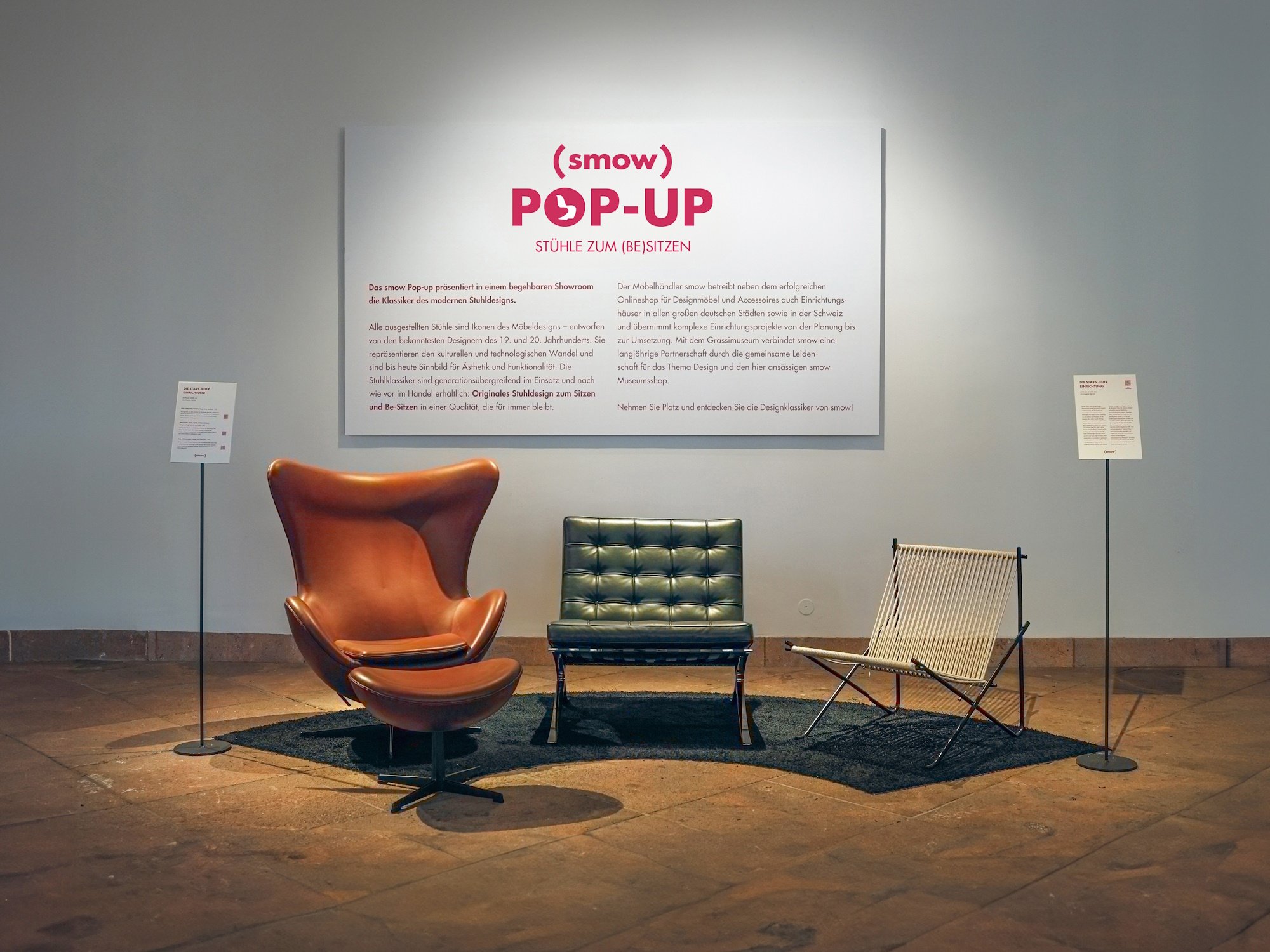
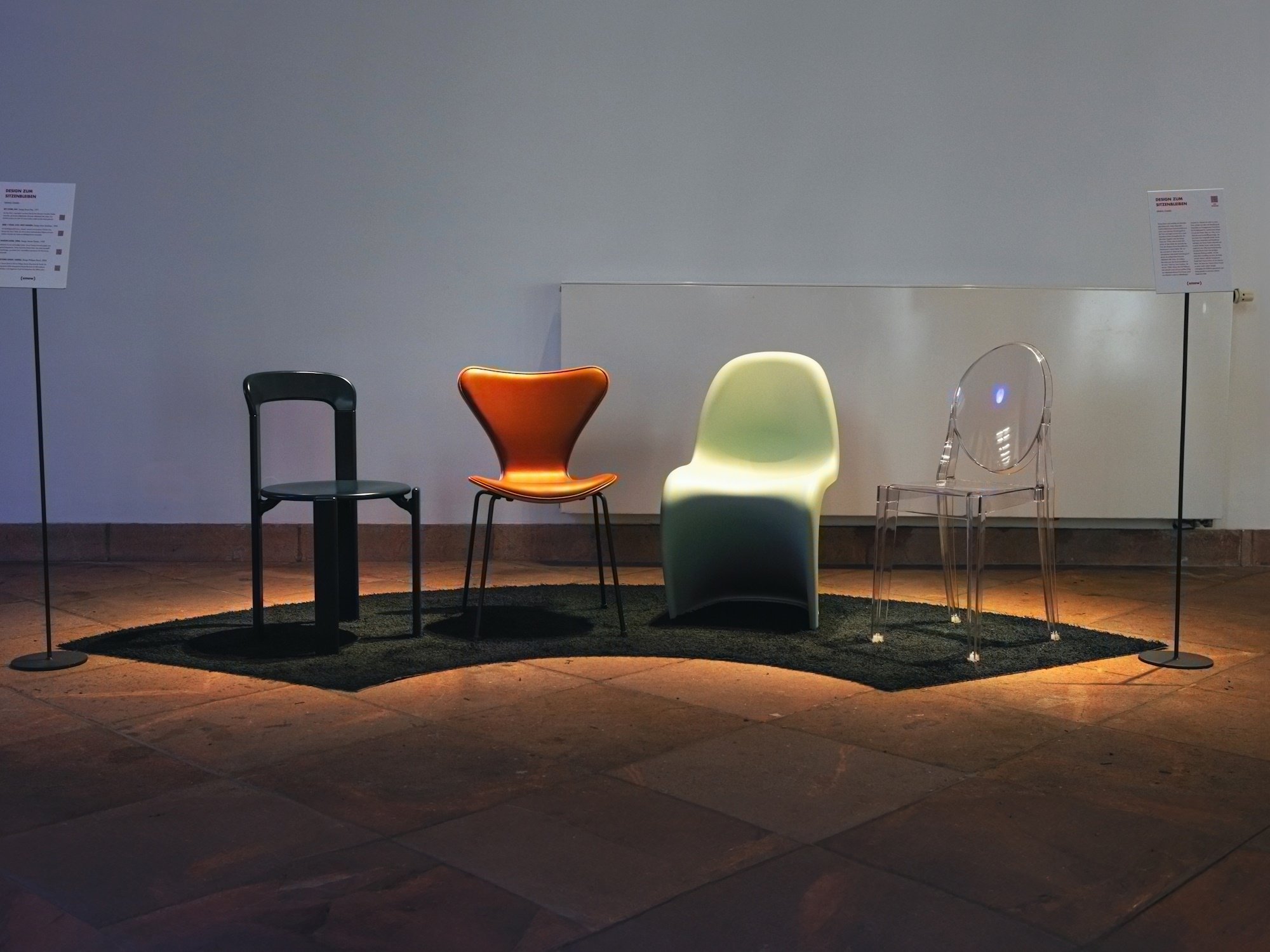
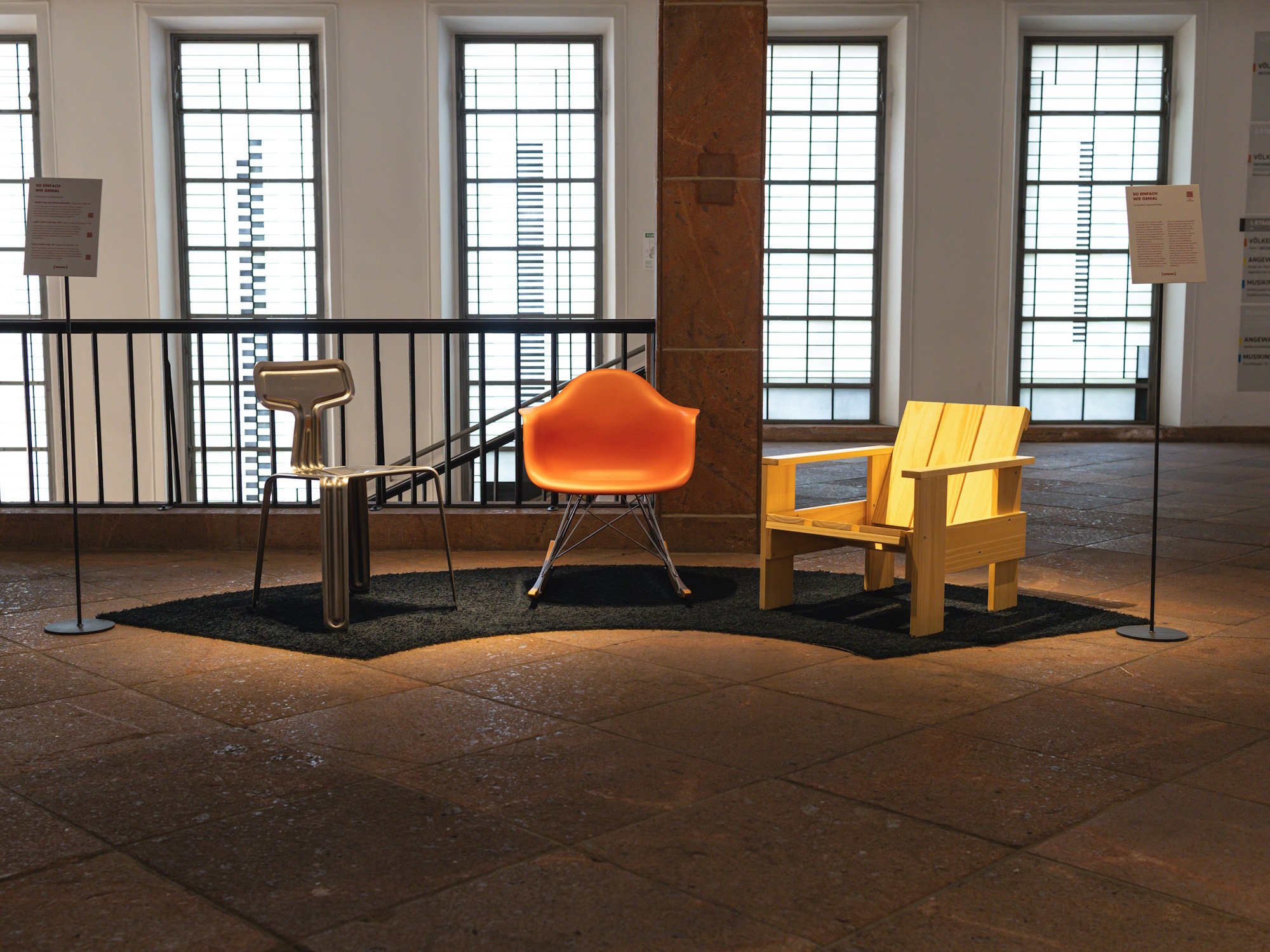
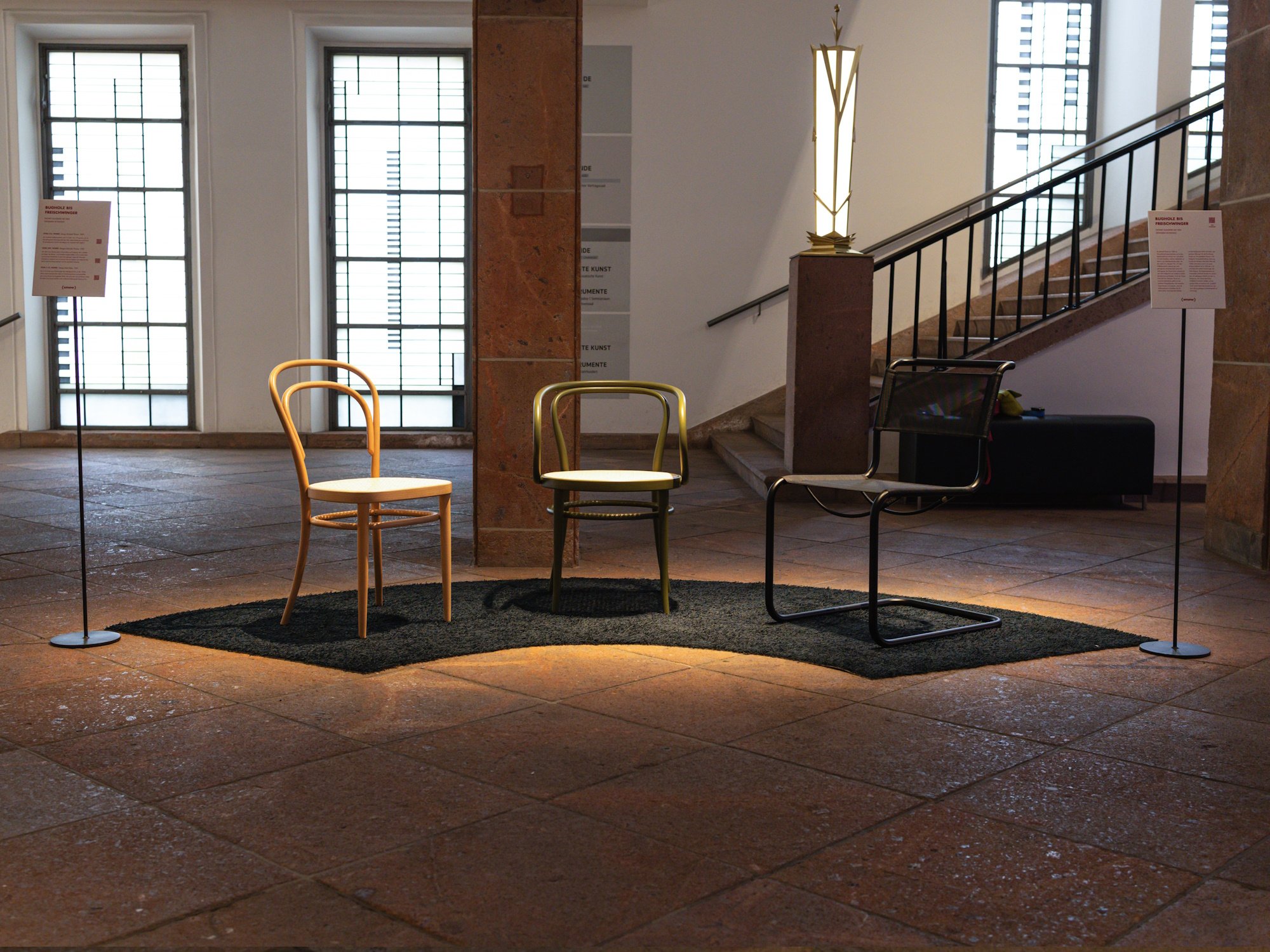

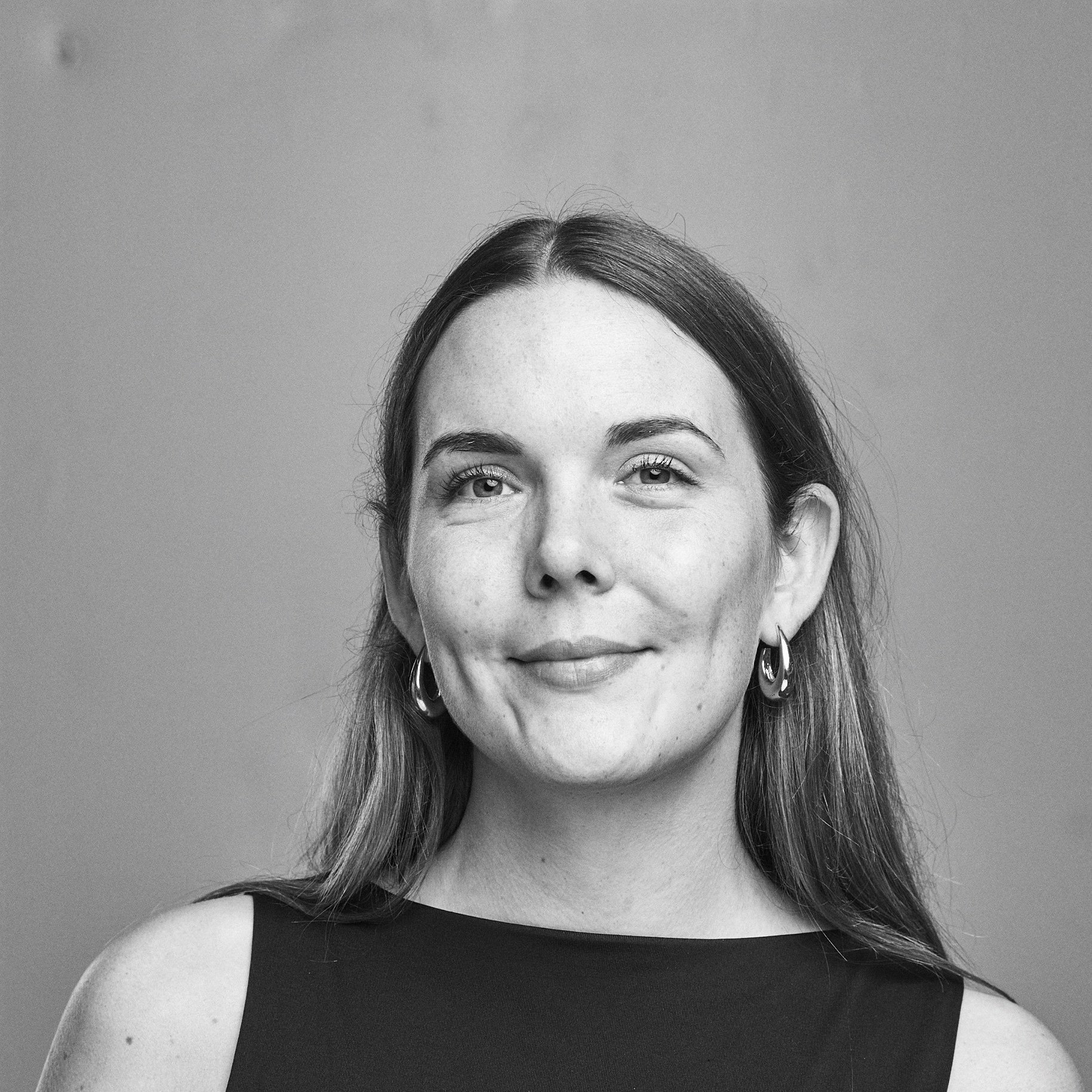

High fashion meets furniture design! In the joint project with Breuninger, exhibition areas in the women's and men's outerwear departments were equipped with home office installations for a period of several weeks.
Learn more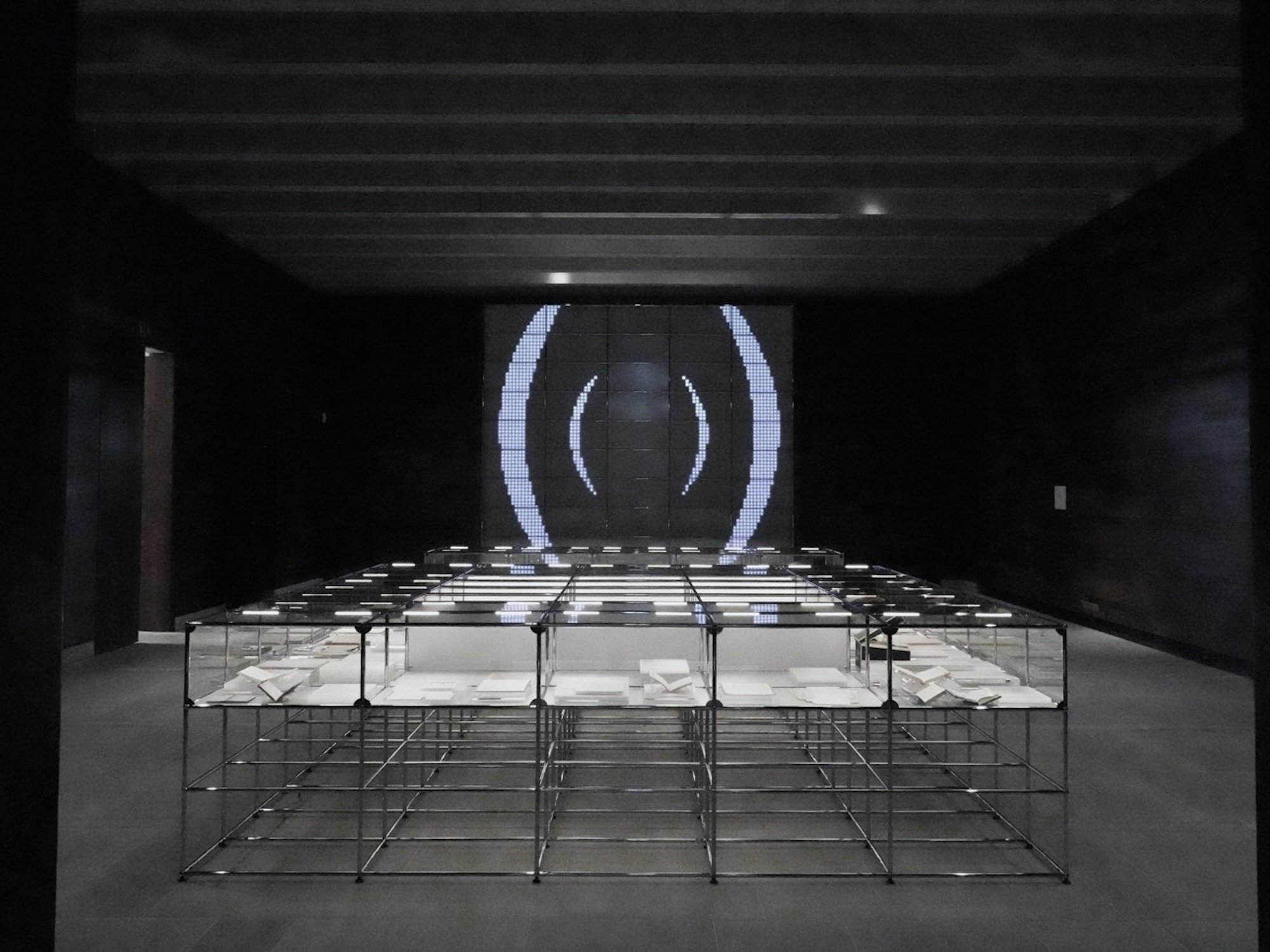
In order to make the exhibition on Kafka's work visually appealing and powerful in its effect, it was necessary to create furniture that was both well thought-out and functional, a task so complex and apparently comparable to the multi-layered and often impenetrable works of Kafka himself.
Learn more